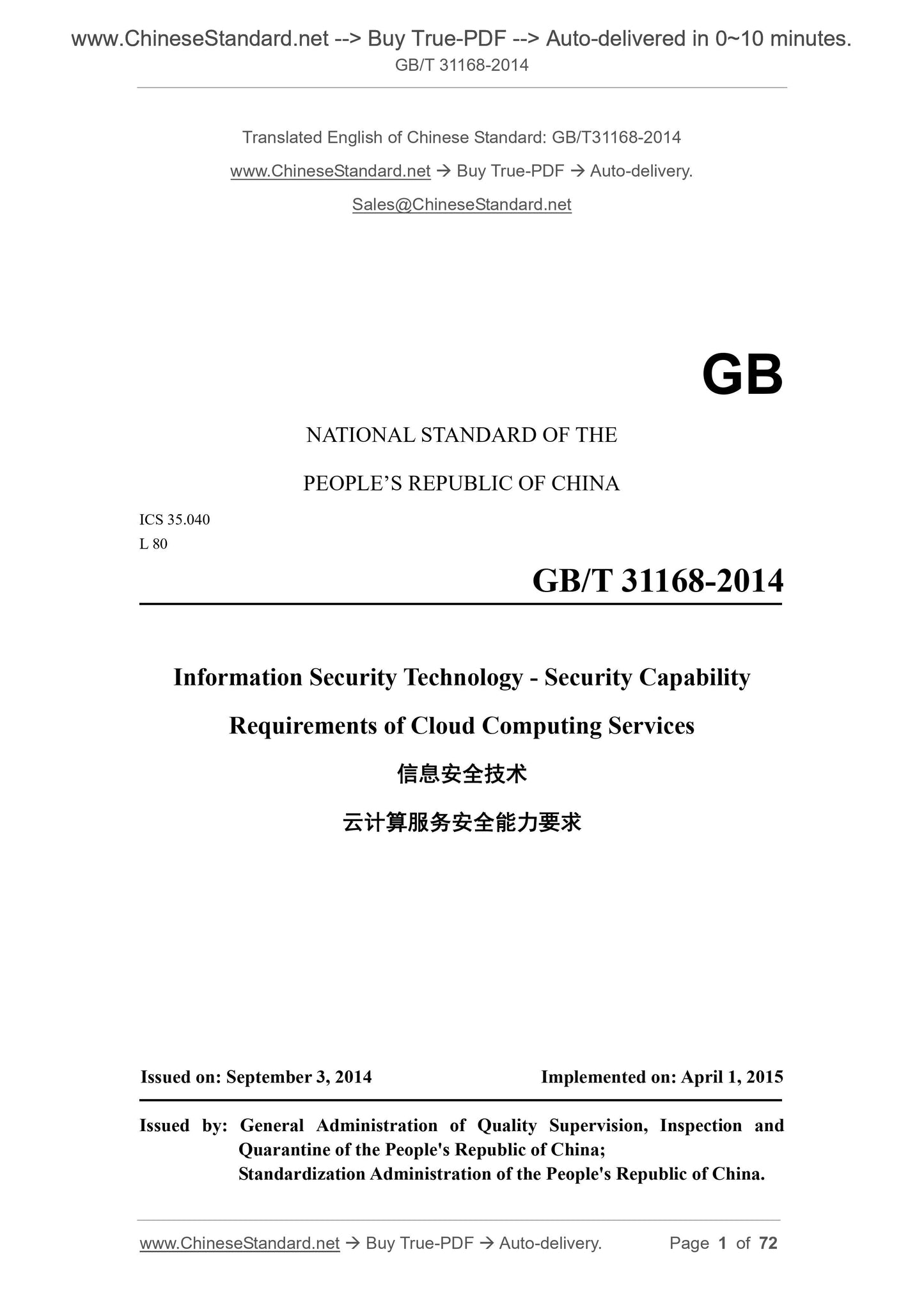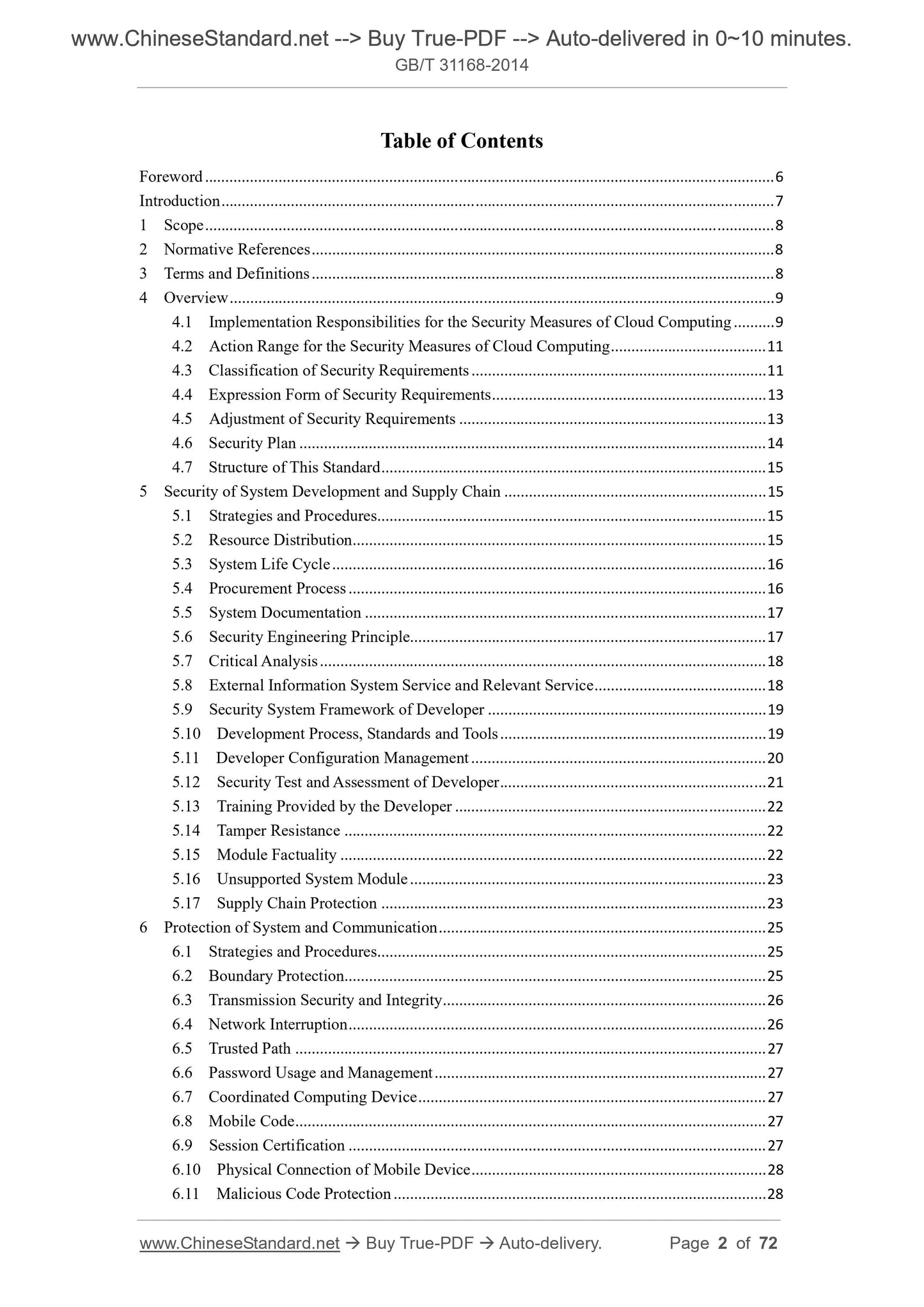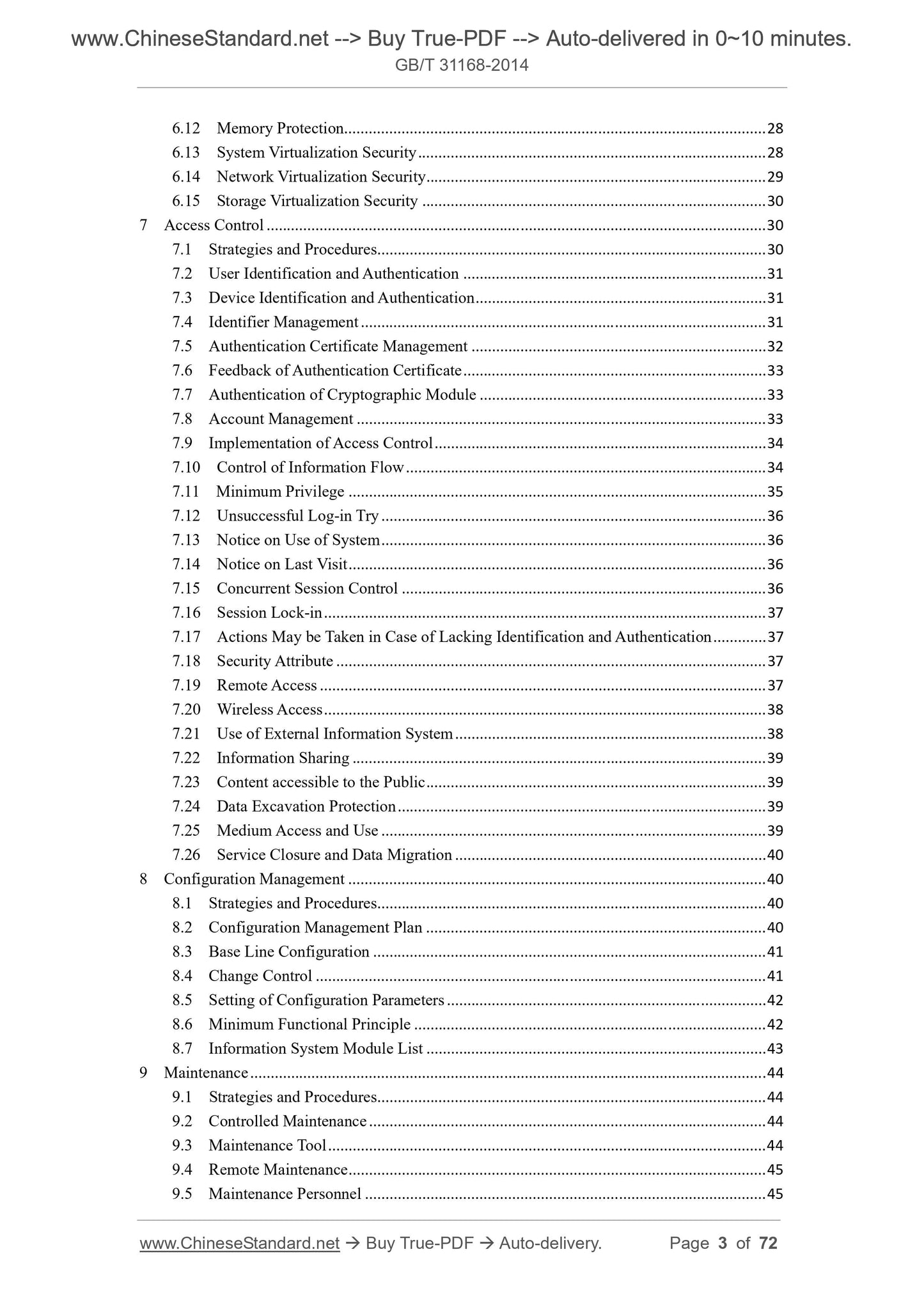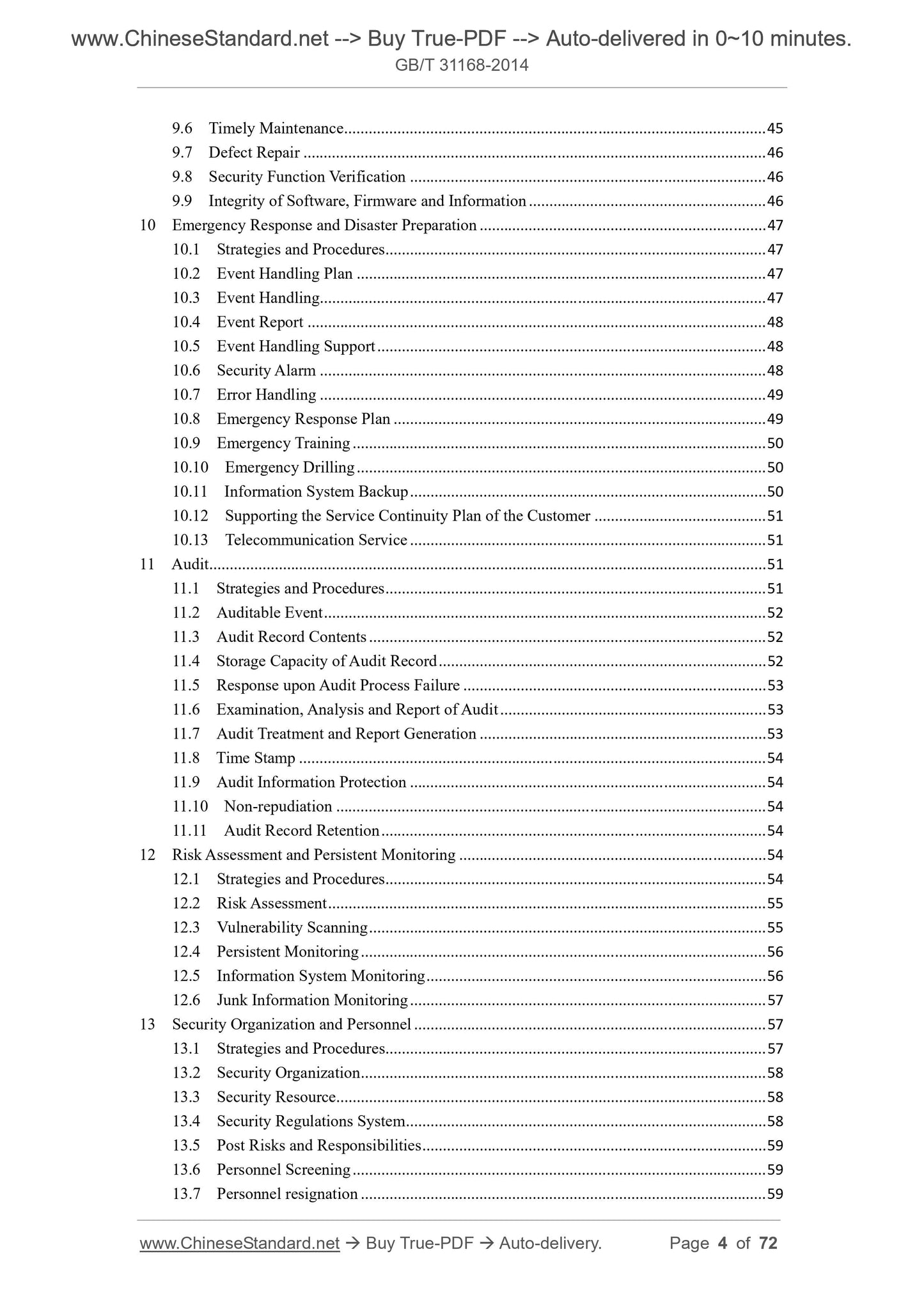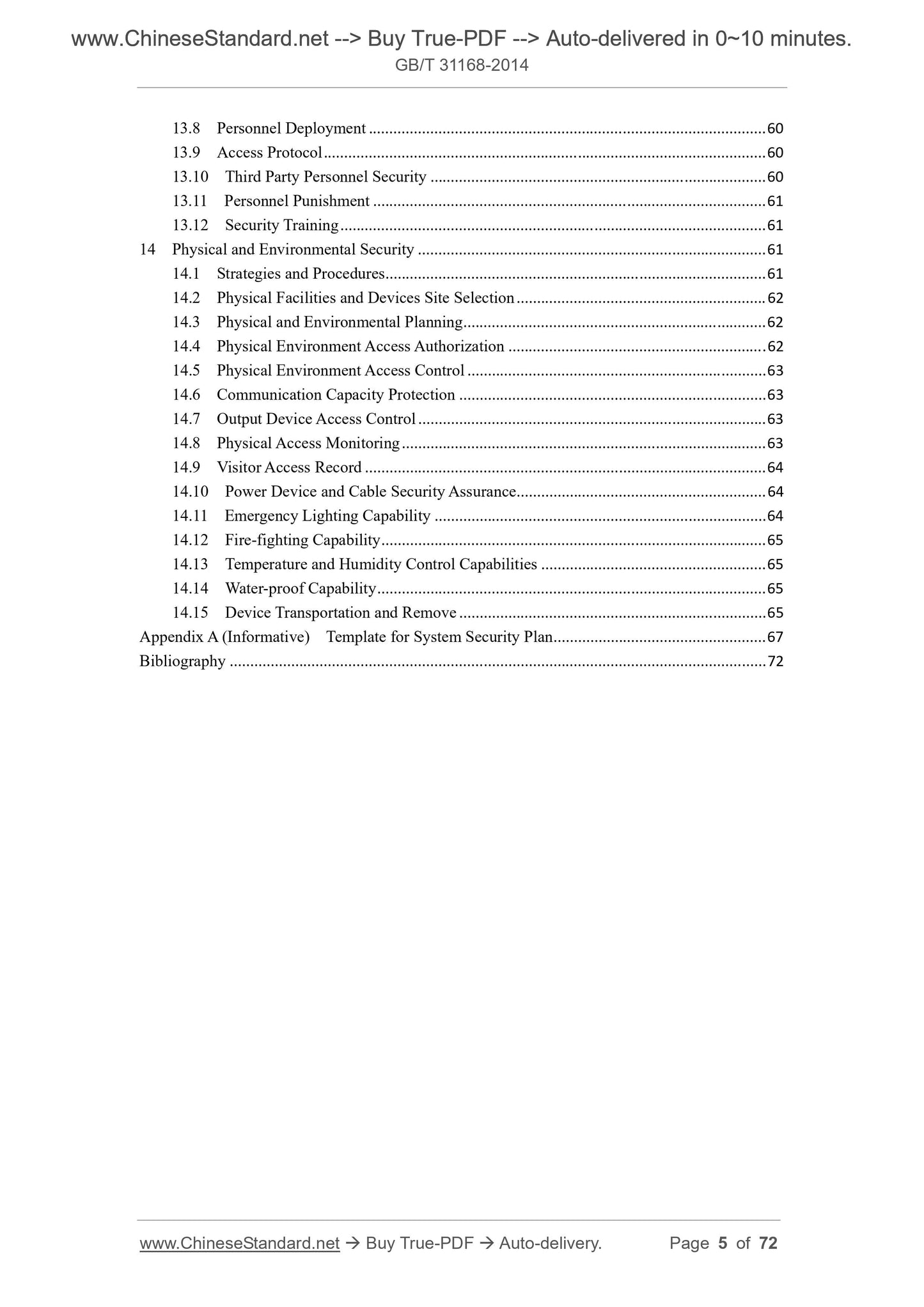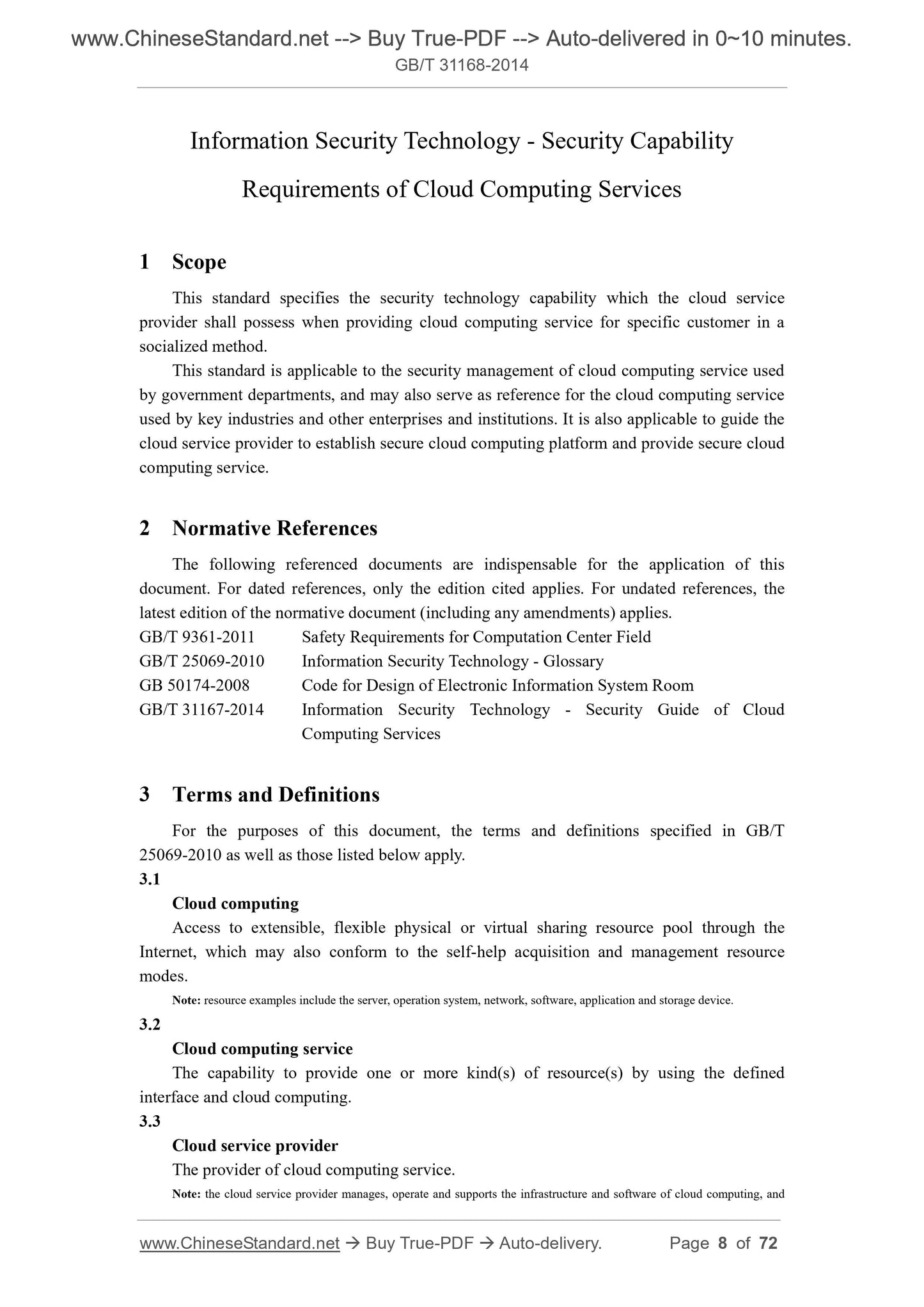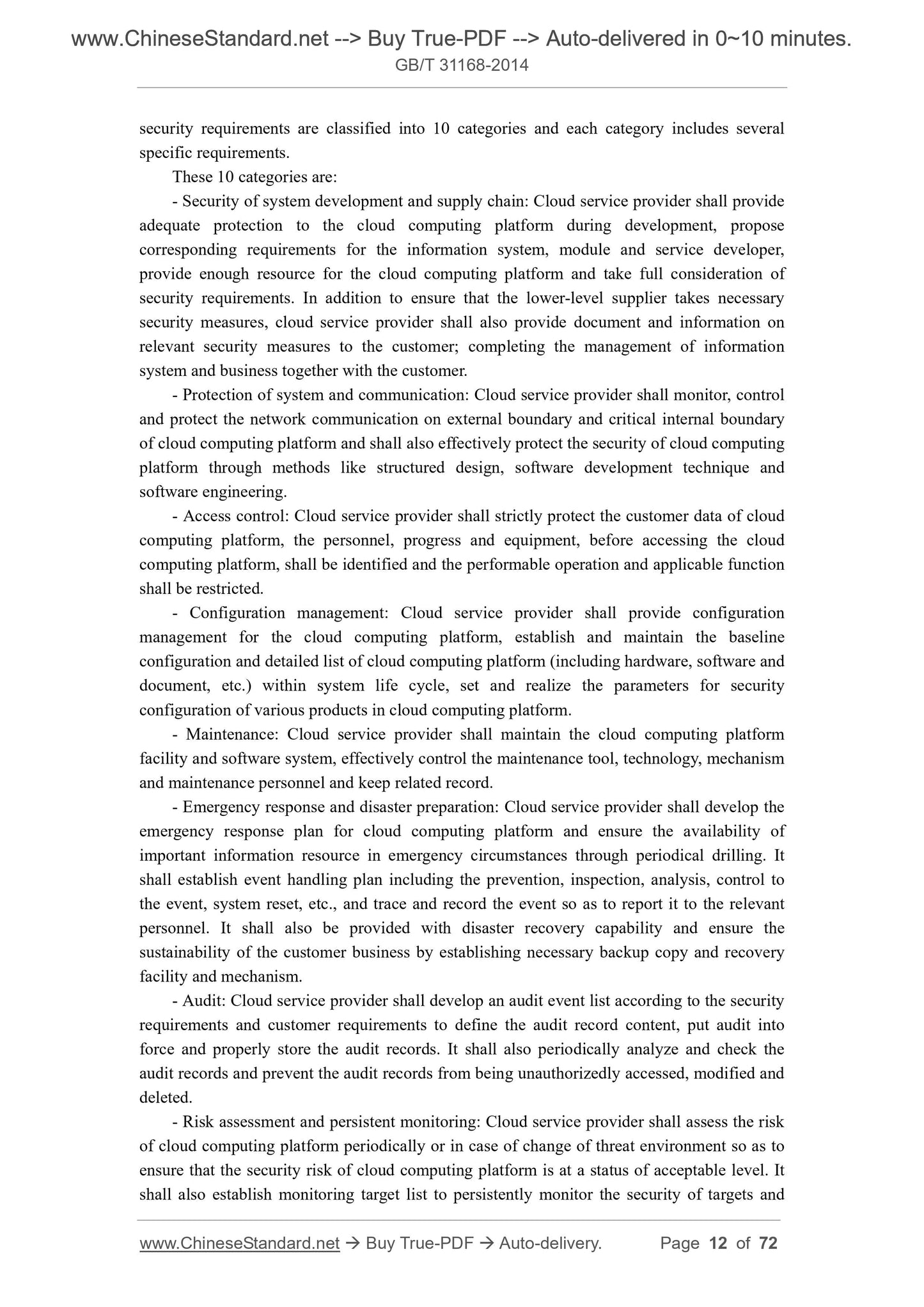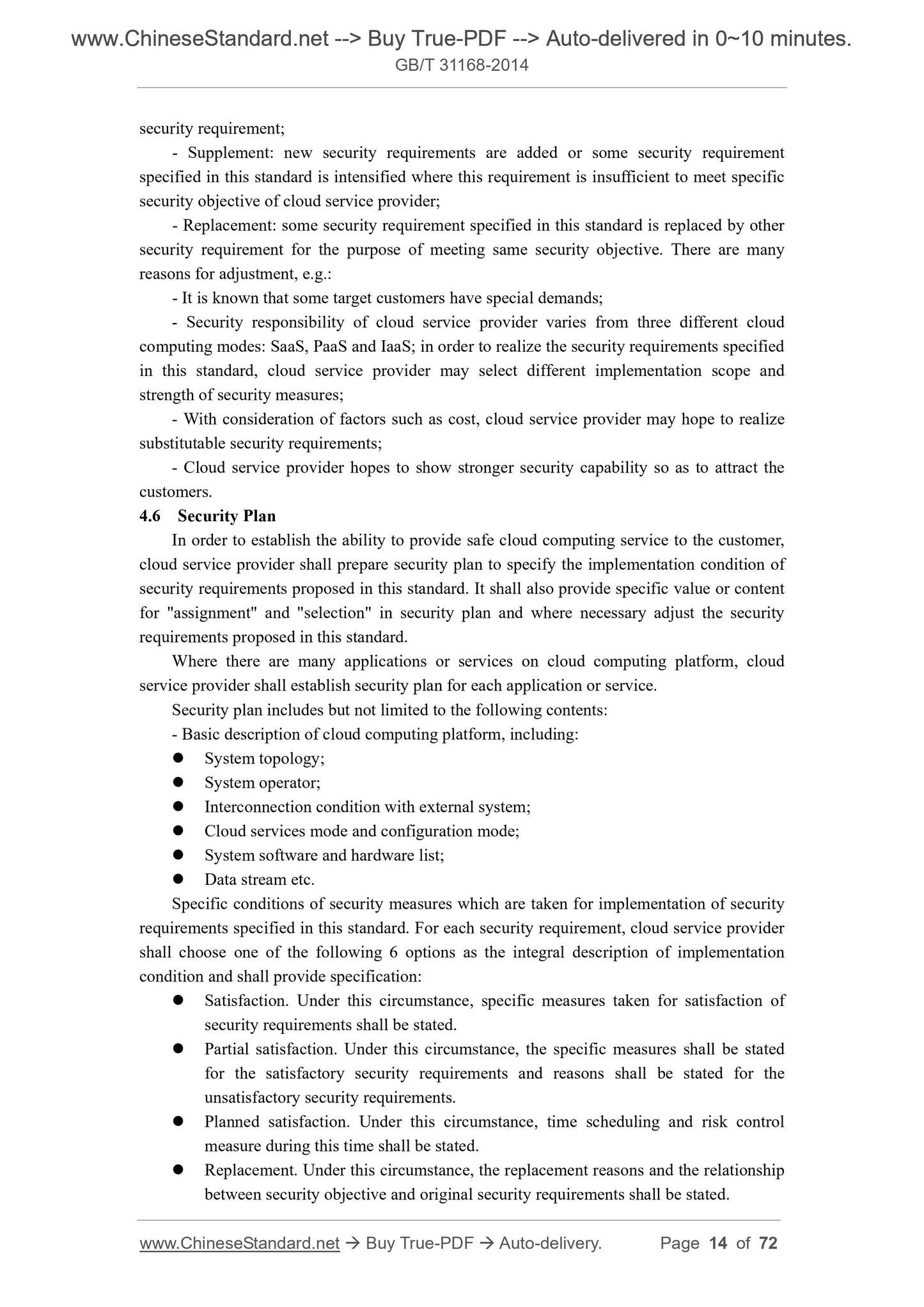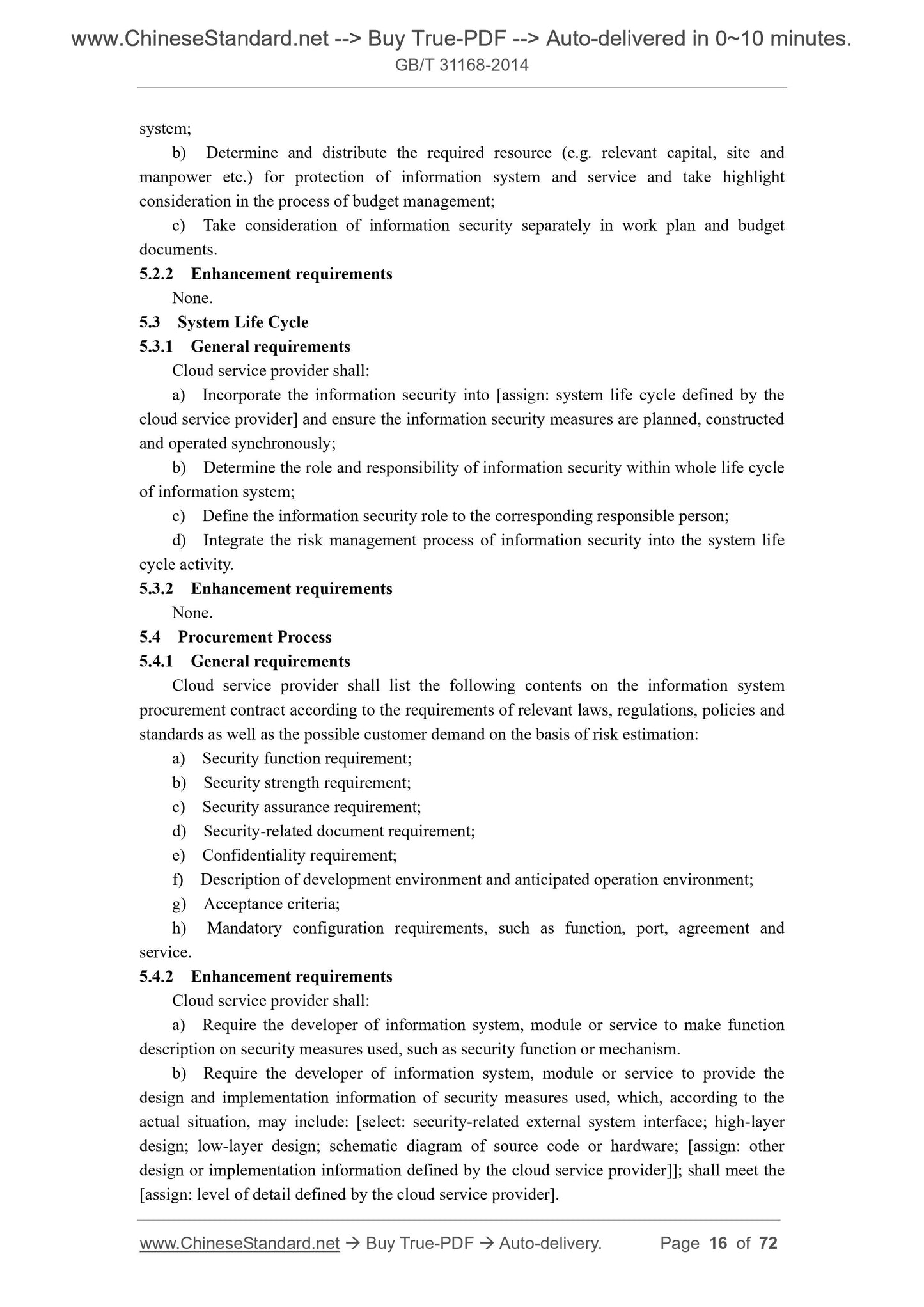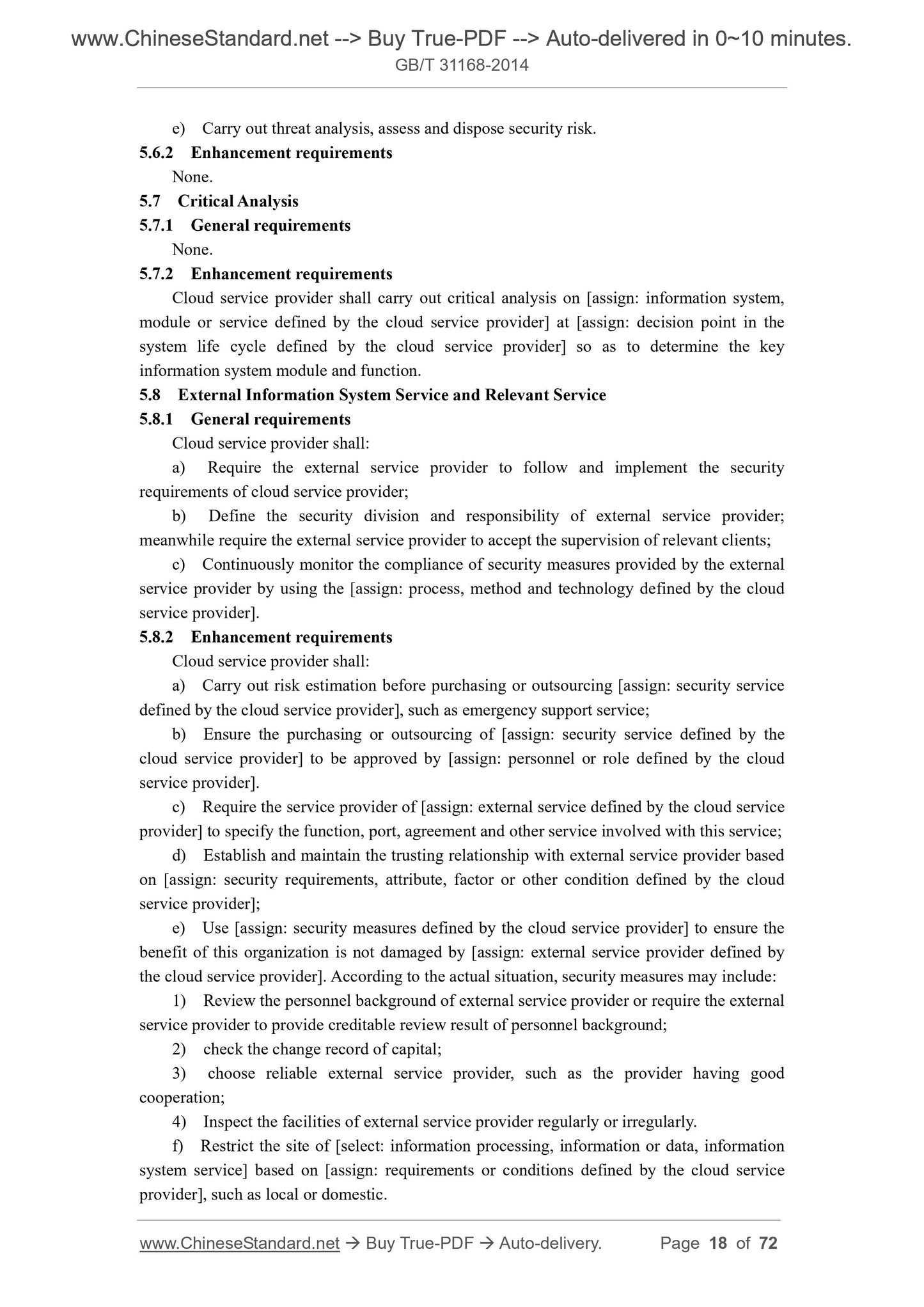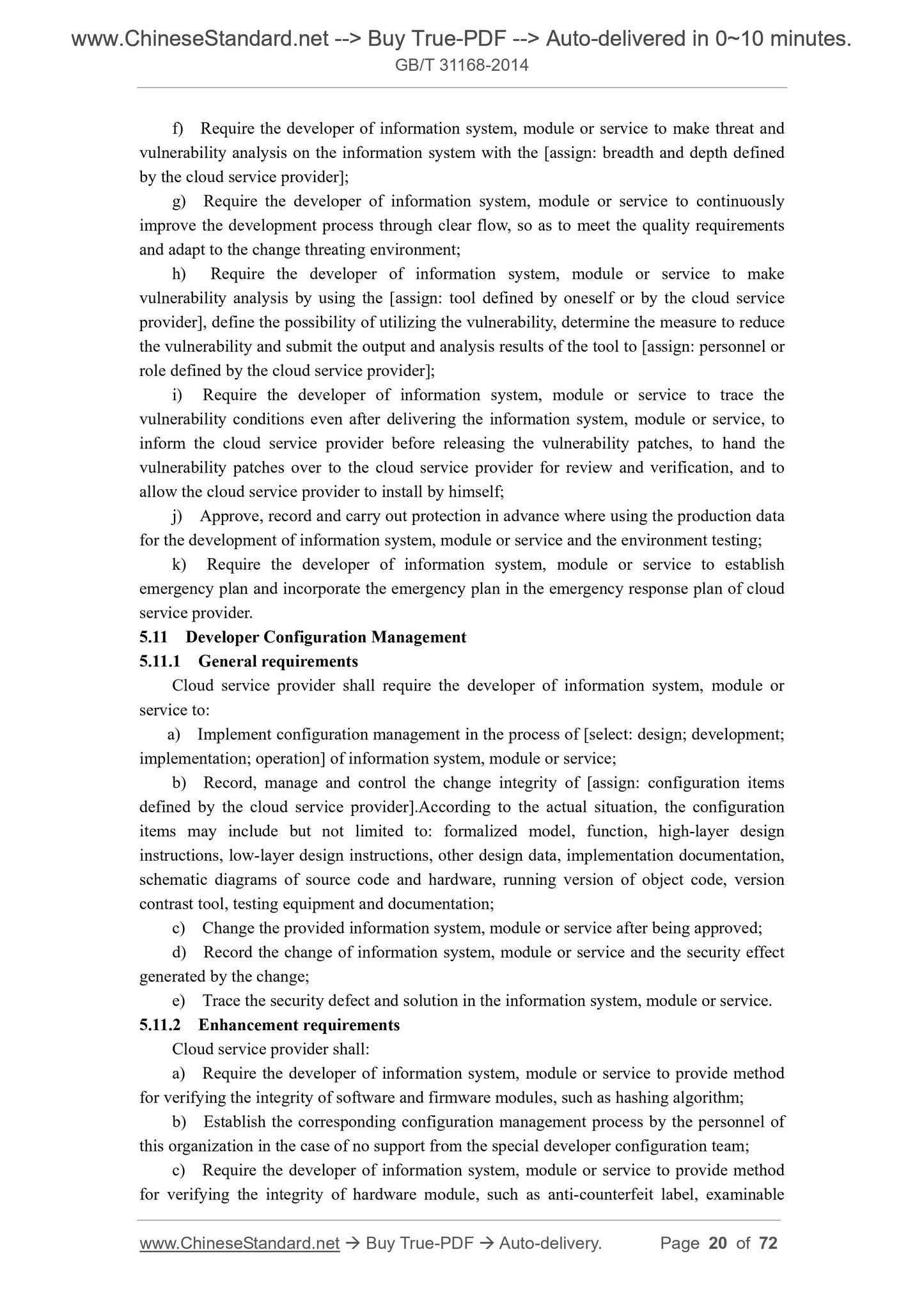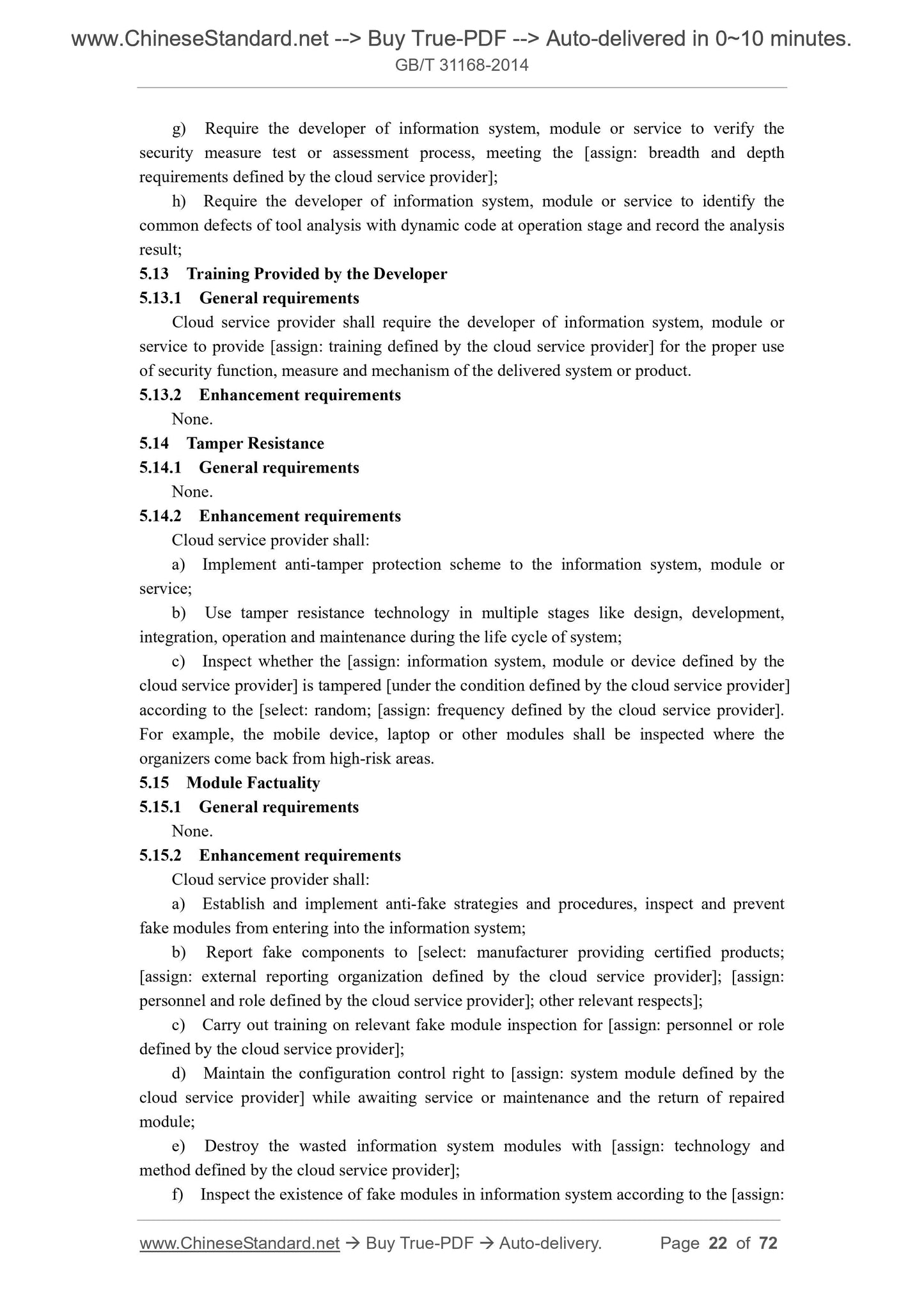1
/
of
12
www.ChineseStandard.us -- Field Test Asia Pte. Ltd.
GB/T 31168-2014 English PDF (GB/T31168-2014)
GB/T 31168-2014 English PDF (GB/T31168-2014)
Regular price
$145.00
Regular price
Sale price
$145.00
Unit price
/
per
Shipping calculated at checkout.
Couldn't load pickup availability
GB/T 31168-2014: Information security technology -- Security capability requirements of cloud computing services
Delivery: 9 seconds. Download (and Email) true-PDF + Invoice.Get Quotation: Click GB/T 31168-2014 (Self-service in 1-minute)
Newer / historical versions: GB/T 31168-2014
Preview True-PDF
Scope
This standard specifies the security technology capability which the cloud serviceprovider shall possess when providing cloud computing service for specific customer in a
socialized method.
This standard is applicable to the security management of cloud computing service used
by government departments, and may also serve as reference for the cloud computing service
used by key industries and other enterprises and institutions. It is also applicable to guide the
cloud service provider to establish secure cloud computing platform and provide secure cloud
computing service.
Basic Data
| Standard ID | GB/T 31168-2014 (GB/T31168-2014) |
| Description (Translated English) | Information security technology -- Security capability requirements of cloud computing services |
| Sector / Industry | National Standard (Recommended) |
| Classification of Chinese Standard | L80 |
| Classification of International Standard | 35.040 |
| Word Count Estimation | 67,676 |
| Date of Issue | 9/3/2014 |
| Date of Implementation | 4/1/2015 |
| Quoted Standard | GB/T 9361-2011; GB/T 25069-2010; GB 50174-2008; GB/T 31167-2014 |
| Regulation (derived from) | People's Republic of China Announcement of Newly Approved National Standards No. 21 of 2014 |
| Issuing agency(ies) | General Administration of Quality Supervision, Inspection and Quarantine of the People's Republic of China, Standardization Administration of the People's Republic of China |
| Summary | This Standard specifies the socialized provide cloud computing services to specific customers, the cloud service providers should have the ability of security technology. This Standard applies to cloud computing services for government departments to carr |
Share
